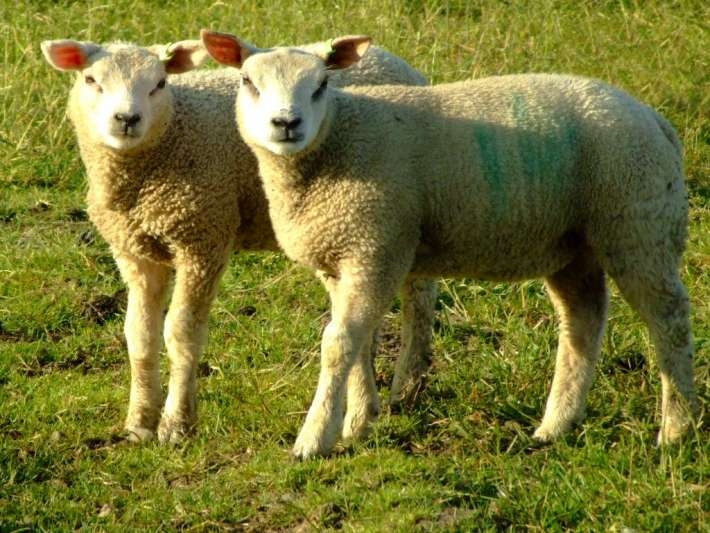
LAMB
The early lambing results have been good in exceptional weather, although some report more ewe deaths in the warmer conditions and many report poor hogget scanning results.
Prime lambs at saleyards are now at yearly highs as volumes decrease and demand builds while waiting for the first new seasons lambs.
Some early seasons predictions are now being quoted at 530-550cpk for the peak lamb kill period, and one processor is offering $6.25/kg for a Christmas chilled lamb contract.
Beef and Lamb NZ’s annual stock survey reinforced what most suspected, with lamb numbers 2 million behind last year and processing overcapacity will again be an issue with bigger plants.
Some exciting news for sheep genetics, with the Farm IQ partnership announcing the development of the SNP chip that will allow the identification of key genes that will improve dramatically the productive performance of selected animals.
The abilty to evaluate the genes that drive the"plate" end of the animals value, such as meat yield and tenderness, will give farmers a market led tool to improve their financial return.
An Australian study on drench resistance in sheep makes grim reading, with 96% resistance to the two original drench families of levamisoles and benzimidazoles and 84% to the combination of both.
Even the more recently created moxidectin has over 50% resistance, and the importance of breeding for worm resistance will be one trait future farmers will need to select from.
And at last some comment from the Meat Industry Excellence Group who report failure to achieve their goals in the short term, but indicate strong determination to instigate change and suggest a unified attack on election of directors of the Meat Industry Co-Operative's could be the first visible way of action.
WOOL
The latest North Island auction saw crossbred wools reach yearly highs and saw the biggest price lift for years, as demand for the first of the hogget wools and the last of crossbred prelamb fleece, drove demand.
The nearly 100% clearance saw the coarse crossbred wool indicator break the 500c barrier for the first time since early 2012 and help contribute to sheeps return to profitability.
Merino wool prices had the biggest lift for two years at the latest Melbourne sale, driven by a new Chinese spinner entering the market and competing strongly against the traditional buyers.
-------------------------------------------------------------------------------------------------------------------------------------------
Farms For Sale: the most up-to-date and comprehensive listing of working farms in New Zealand, here »
-------------------------------------------------------------------------------------------------------------------------------------------
BEEF
Feed is driving the store cattle market especially in the north, and coupled with the highest prime steer schedule for 5 years, prospects look good for beef.
The last seasons drought created a shortage of older animals for the prime market and with Beef and Lamb NZ reporting numbers were back 2.5% in the North Island and even higher in the cattle dominant areas of the East Coast and Taranaki/Manawatu, this hole in the production cycle will take a year or so to fill.
A big spring cattle sale in Gisborne dominated by yearling cattle attracted “red hot prices” from farmers unable to purchase calves in the autumn because of a lack of feed.
DEER
Spring venison schedules keep building and are now only $20/hd behind last year for a 60kg cwt 10 month stag.
New velvet grading guidelines have been introduced to differentiate non traditional style heads in the Super A grade, as volumes increased as farmers focused on velvet weight to maintain profitability in this specialist operation.
DAIRY
Great feed conditions continue in Waikato as silage contractors start in earnest 3 weeks early, and advisers urge managers on the dangers of high post grazing residuals that will influence feed quality at next grazing when mating is due.
Southern farmers are close to their second round of grazing and the successful management of grass over the early winter period will soon become evident during this period.
AgResearch’s study into overland flow and contaminant losses into waterways from stock on winter forage crops, is producing guidelines for strategic grazing rules to minimize polluting practices.
Westpac economists have upgraded their pick for the 2014 payout, to $8.30 per kg ms after recent very strong auction prices with large volumes saw Fonterra receiving payments at $9/kg levels.
With their publicized policy to reduce volumes at auction to about 20% of last year, and invest heavily in more added value higher margin products, like infant milk powders, this pressure on supply of commodities should continue to drive prices.
The auction did ease by 1.1% but based on volumes offered the market deemed this was still a good result.
---------------------------------------------------------------------------------------
Here are some links for updated prices for
- lamb
- beef
- deer
- wool




We welcome your comments below. If you are not already registered, please register to comment.
Remember we welcome robust, respectful and insightful debate. We don't welcome abusive or defamatory comments and will de-register those repeatedly making such comments. Our current comment policy is here.